#philippine native trees
Explore tagged Tumblr posts
Text
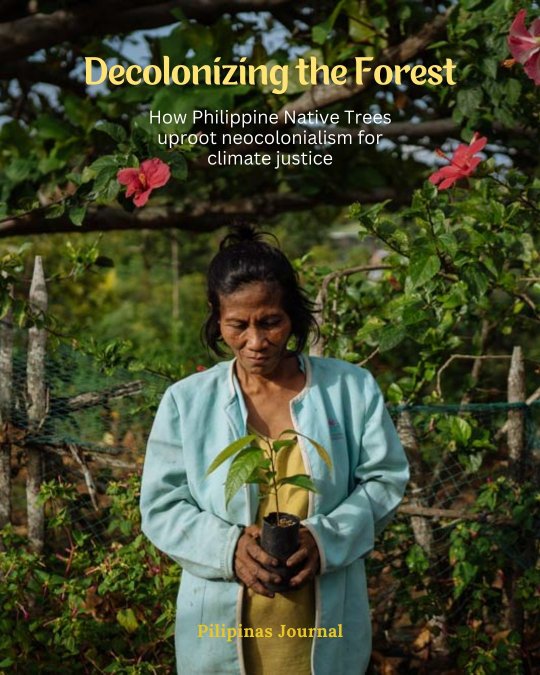



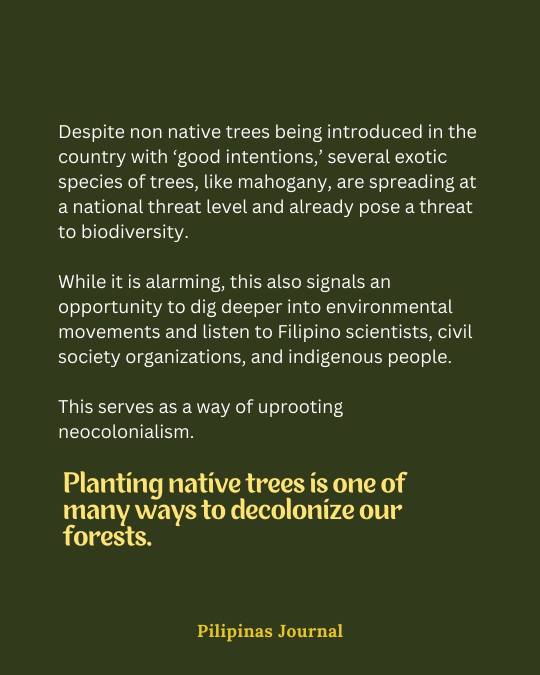
From Pilipinas Journal Instagram Page: Planting native trees is part and parcel of a broad process of uprooting neocolonialism and building climate resilience. Given that they are tied to their relationship with the rich Philippine soil, planting native trees in the country is one of many ways to decolonize our forests. Other than that, planting native trees may not be the sole answer or cure-all to systemic climate injustice, but doing this will manifest our respect for our indigenous roots and honor Mother Earth.
Discover the profound connection between our forest ecosystem, neocolonialism, and climate resilience in their latest article.
#philippines#not a lit post#decolonizing the philippine forest#essay#philippine native trees#philippine wild life
90 notes
·
View notes
Text

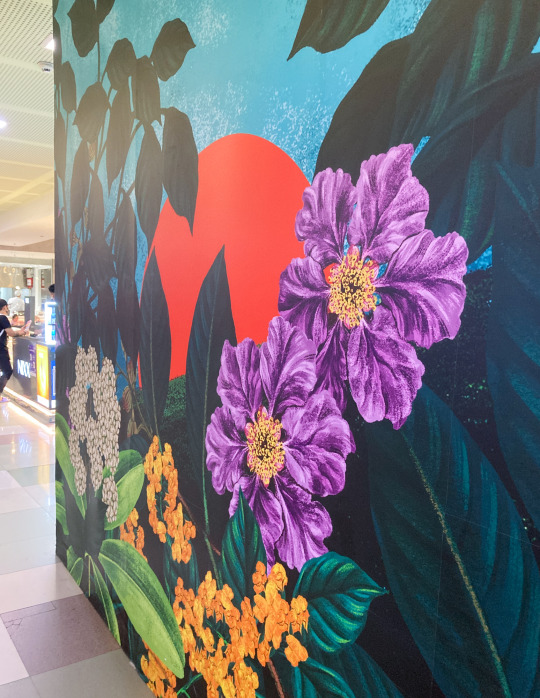


Banaba flowers, and even products & artwork in and around my biking grounds in Manila.
I’m beginning to see more and more local products using Banaba (𝘓𝘢𝘨𝘦𝘳𝘴𝘵𝘳𝘰𝘦𝘮𝘪𝘢 𝘴𝘱𝘦𝘤𝘪𝘰𝘴𝘢). It has long been a traditional medicinal source for various communities in the country. Banaba is native to Southeast Asia, and has been long known for its antidiabetic, anti-inflammatory, and antioxidant properties (DOST PCHRD*).
Maybe one day every home will have a Banaba tree, helping urban ecosystems thrive with life and biodiversity. What local and native trees grow in your neighborhood? How have some of them been utilized by your neighbors and Indigenous communities? These are our health heirlooms, passed down by generation, and germination.
Learn more about Banaba and more of our "forest friends" at the Haribon Foundation: https://haribon.org.ph/support-our-work/rainforestation/forest-friends-of-the-philippines/meet-banaba/
*Department of Science and Technology, Philippine Council for Health Research and Development
19 notes
·
View notes
Photo


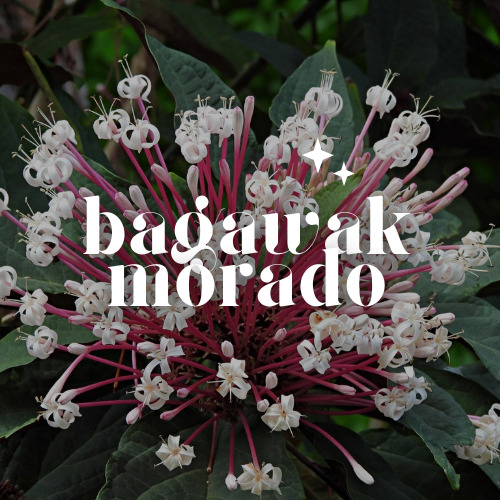

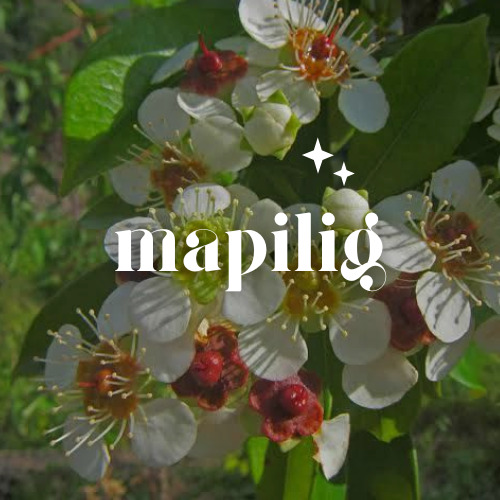

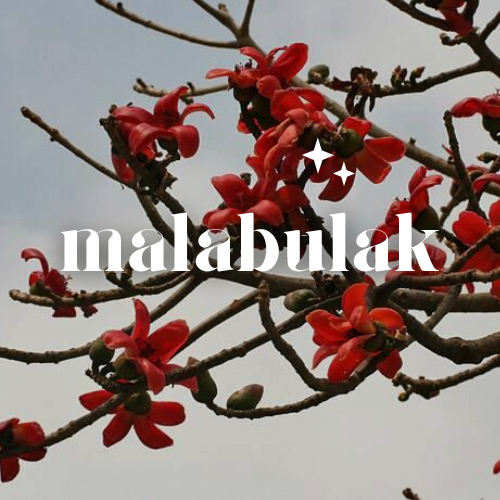
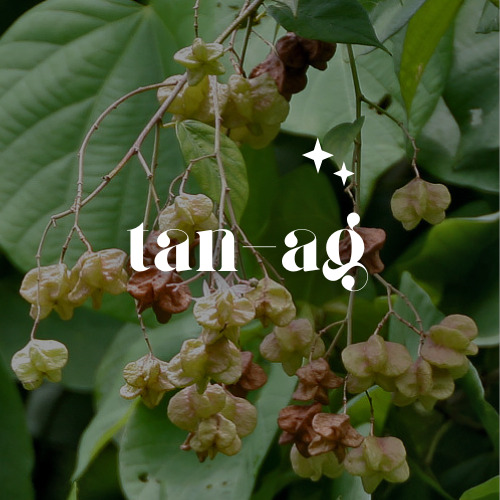

Ilan lamang ang mga ito sa magagandang puno sa Pilipinas. Paborito ko siguro rito ang Salingogon at Banaba. Mukha silang Cherry Blossoms at Wisteria.
103 notes
·
View notes
Note
do you know any reptiles native to the philippines?
DO I?!?! DO I?!??!!
Yes, I do.
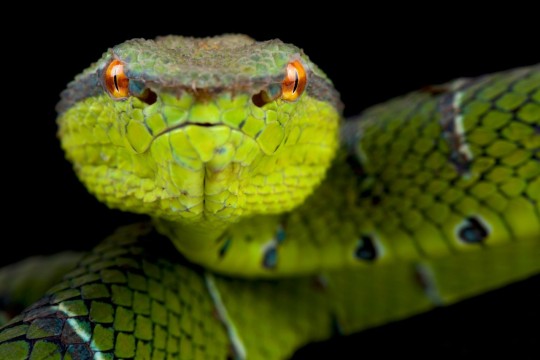
North Philippine Pit Viper (Tropidolaemus subannulatus), family Viperidae, Philippines
Venomous
photograph by Reptiles4all
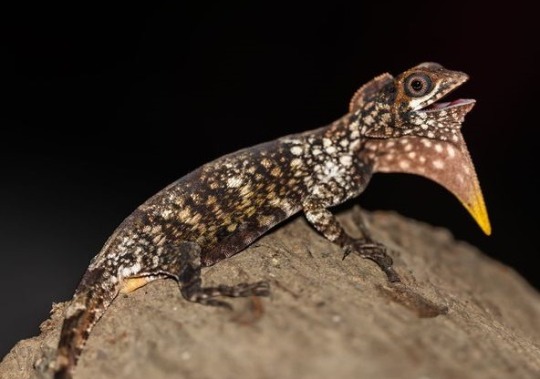
Two-spotted Flying Lizard (Draco bimaculatus), male, family Agamidae, Bohol, Philippines
photograph by Bohol Wild Herping
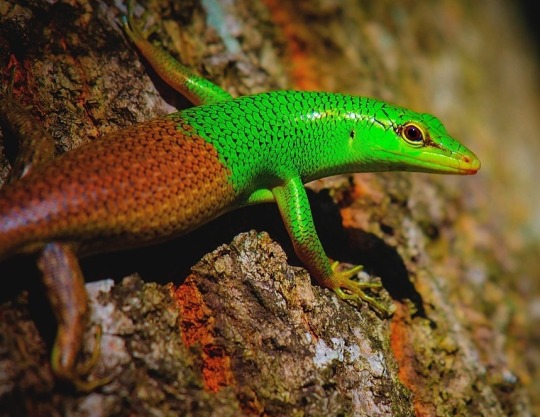
Emerald Tree Skink (Lamprolepis smaragdina), family Scincidae, Jasaan, Misamis Oriental, Philippines
photograph by Domzjuniorwildlife
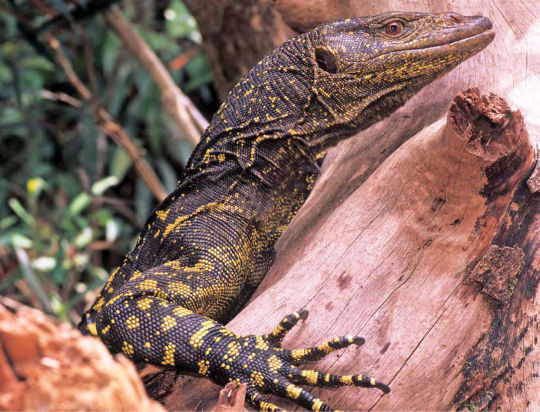
Northern Sierra Madre Forest Monitor Lizard (Varanus bitatawa), family Varanidae, endemic to the northeastern coast of the island of Luzon, Philippines
One of only 3 species of frugivorous (fruit-eating) monitor lizards, a group which is usually carnivorous.
This species is not strictly frugivorous, as they also feed on invertebrates.
photograph by ACD
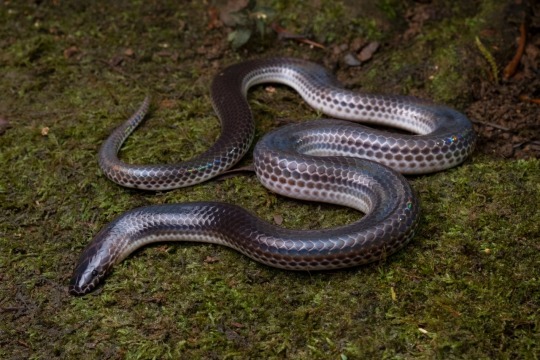
Sunbeam Snake (Xenopeltis unicolor), family Xenopeltidae, Philippines
photograph by Rupert Grassby-Lewis
267 notes
·
View notes
Text
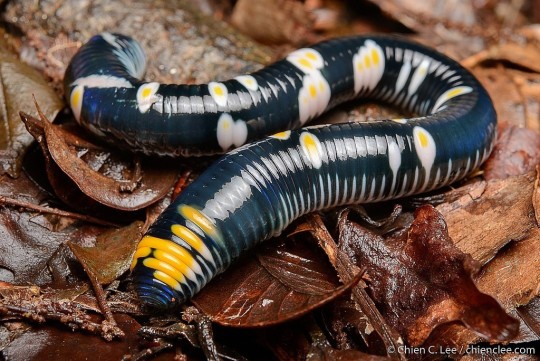
Name: Fried Eggs Worm (Archipheretima middletoni)
Debut: Real Life
What the! Whuzzah! That's a! WOW! This is how I felt upon learning about Fried Eggs Worm for the first time, and I hope you feel the same way, because MY GOODNESS! In this world, there exists an earthworm, which is a deep blue, and has spots that look just like sunny-side-up eggs. Sometimes it looks like the yolk was punctured and spilled out! Better hope a Toast Worm is nearby to sop that up!
I could not BELIEVE I had not learned about this creature until just a few months ago, and I could not let it be obscure any longer. This is one of the most incredible creatures, and now you know about it, too!
Perhaps the reason for its obscurity is that it was only "formally" discovered and named rather recently, in 2009. Of course, the people who had been living in its native range in the Philippines had known about it long before that! How could they miss it, really? I will remind you: this worm has Egg Imagery all over its body.
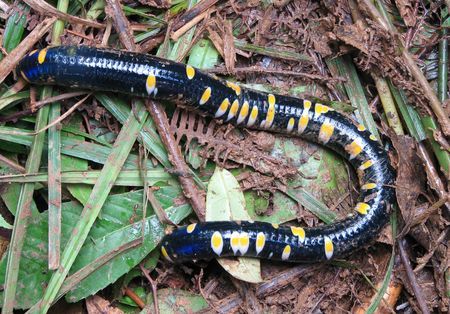
Some local folklore suggested that these silly little wigglies might be the juvenile form of an eel species from a nearby river, and if you're familiar with eel development, something that strange doesn't seem all that out of character for an eel. The truth is, the Fried Eggs Worm is quite out of character for an earthworm! It is more of a leaflitterworm, because instead of burrowing in the soil, it burrows in the leaf litter. It is thought that the funny spots might help it camouflage in there by resembling light pouring through the leaves, kind of like a baby deer's or tapir's spots!
The Fried Eggs Worm does not spend ALL of its time in the leaf litter. Oh, no. It isn't even born in there. It's born in a doggone TREE. Their babies have been found in the leaf axils of the pandanus tree, meaning their parents CLIMB TREES in order to reproduce. Arboreal annelids! These limbless tubes are better at climbing trees than we are, and we're apes! And more ridiculous still, so far only one baby worm has been found per tree. These babies might each get an entire tree all to themselves with no competition. Is that really necessary? I think Fried Eggs Worm may be showing off, but it has every right to do that. I hope it continues!
Fried Eggs Worm should be the new Easter mascot. Nothing against rabbits, but they're one of the most popular animals. They have enough, I think. And they're not Egg at all! They don't lay eggs, and they don't have any visual egg motif. Fried Eggs Worm, however, lays eggs, and is covered in egg iconography! Second only to Fried Egg Jellyfish.
In conclusion, this eggcellent creature worms my heart, and I hope you feel the same way, especially if you did not know of them before! It feels representative of the fact that we will never know every creature of this world, and there will always be more to learn!
If you're a REALLY devoted Fried Eggs Worm Superfan and want to show it to the world, use this simple guide to steal their look!

-blue
-egg
303 notes
·
View notes
Text
Animal of the Day!
Mindoro Bleeding-heart (Gallicolumba platenae)

(Photo from Animalia Bio)
Conservation Status- Critically Endangered
Habitat- Philippines
Size (Weight/Length)- 200 g; 30 cm
Diet- Fruits; Seeds; Insects
Cool Facts- This bird is completely fine, that’s just their measure of horniness. I’m not joking. During the breeding season, males puff out their chest and strut their stuff for females. The brighter the red, the more fit the male. Mindoro bleeding-hearts live in small flocks alongside green pigeons as they forage for fruit. Unfortunately, these doves are under extreme threat from illegal logging and dynamite-blasting for marble. An estimated 50-250 adults survive. Conservation groups are working to map the forests of Mindoro and do an in depth population survey. There are future hopes for a captive breeding program to bring these birds back from the brink. In addition, they are working with local people to plant native trees to replace areas that were previously logged.
Rating- 13/10 (As a wise man once said “Shot through the heart and you’re to blame…”)
#animal of the day#animals#birds#doves#monday#september 11#mindoro bleeding-heart#biology#science#conservation#the more you know
823 notes
·
View notes
Text
The Colugo: this mammal is able to glide through the air using a fur-covered membrane that stretches across most of its body margin
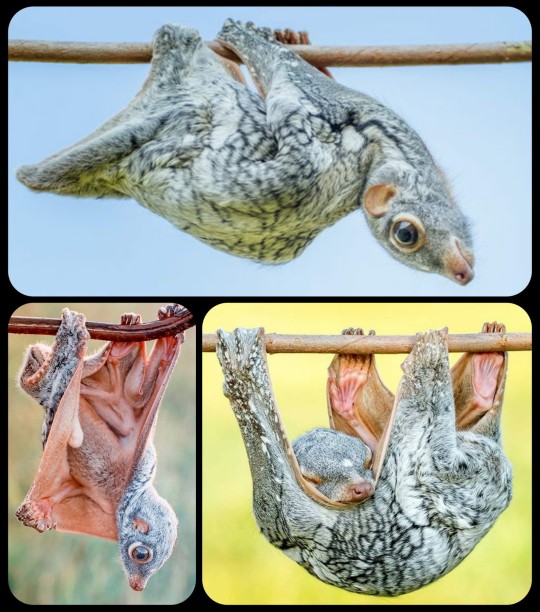
Colugos are often referred to as "flying lemurs," but genetic studies have shown that they are actually among the closest living relatives of primates, occupying a sister group.
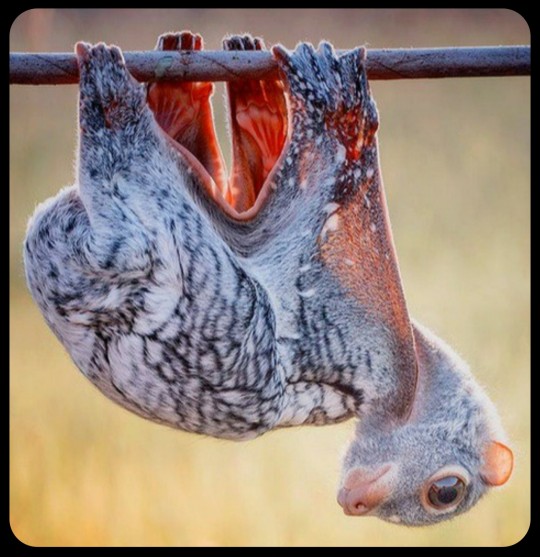
They are native to the tropical rainforests of Southeast Asia, where they are divided into two extant species: the Philippine flying lemur (Cynocephalus volans) can be found in the Southern Philippines, and the Sunda flying lemur (Galeopterus variegatus) can be found in parts of Vietnam, Laos, Cambodia, Thailand, Myanmar, Malaysia, and Indonesia.
The fur-covered membrane that stretches across the colugo's body is known as a patagium; a similar membrane can be found in other gliding mammals (e.g. flying squirrels, sugar gliders, etc.) but the patagium of the colugo is far more extensive, surrounding almost all of the animal's body margin and stretching even between the tail and hind legs.
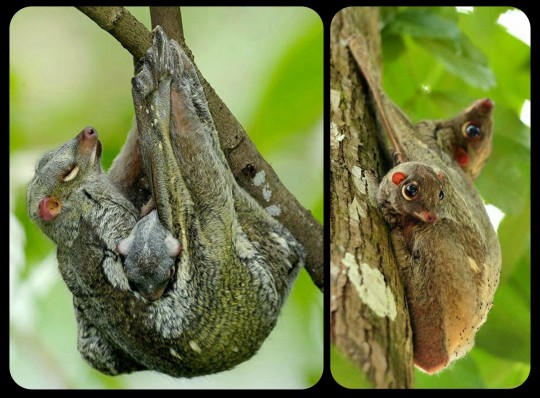
When they are not actively gliding, female colugos with young offspring will often pull their tails up against their bellies, effectively curling the patagium into a pouch in which the baby can be carried and protected. In order to glide, however, the mother must fully extend her patagium, meaning that she must unfold the pouch; if the baby has not yet learned how to glide on its own, then it must curl itself around the mother's torso and hold on tight as she glides from tree-to-tree.
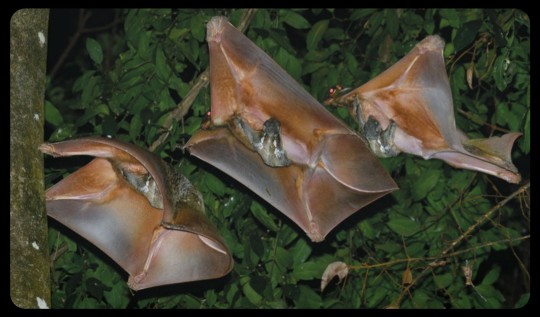
The extensive size of their patagium means that colugos have far more "wing space" than other gliding mammals, which enables them to glide much further. In a single leap, a colugo may glide across a distance of up to 145 meters (about 475 feet) -- nearly the length of three Olympic-sized swimming pools. Studies have shown that they can glide a total distance of 1,342 meters (4,403 ft) per night, climbing a total of 320 meters (1,050 ft) up into the trees in order to do so. They have extremely strong claws, and the soles of their feet are able to mimic suction-cups, which enables them to maintain a tight grip on tree trunks and branches.
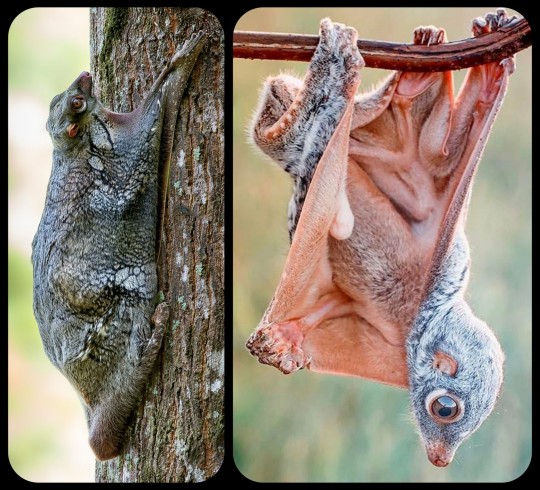
Colugos are most active at night, and they are strictly herbivorous, feeding only on young tree leaves.
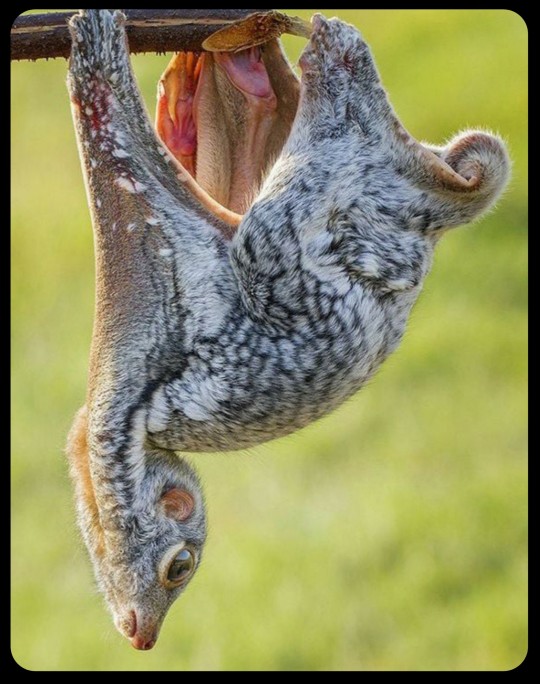
I don't normally feature mammals on my blog, but this one in particular seemed too heartbreakingly adorable and too weird for me to ignore. I mean, look at it -- it's like a tiny dinosaur wrapped in a Snuggie!
Sources & More Info:
Science News: On a Cool Night in Malaysia, Scientists Track Mysterious Colugos Across the Treetops
Animal Diversity Web: Galeopterus variegates (the Sunda Flying Lemur)
BioMed Central Journal of Biology: Colugos: obscure mammals glide into the evolutionary limelight
World Wildlife Fund: Flying Lemurs
National Geographic: Why Do Flying Lemurs Glide?
Animal Diversity Web: Cynocephalus volans (the Philippine Flying Lemur)
#mammals#zoology#animals#nature#colugos#sunda#flying lemurs#animal facts#gliders#southeast asia#wildlife#cute animals#cool animals#nature is weird#these guys probably give the very best hugs tho
899 notes
·
View notes
Text
Indigenous rainforestation
Indigenous communities in the Philippines’ Mt. Kalatungan protected area have since 2021 carried out a tree-planting campaign to restore native vegetation lost to decades of commercial logging and agriculture.
Known as rainforestation, it aims to rejuvenate vital ecosystem services like flood mitigation, which benefits urban areas downstream, while also providing incentives for the communities driving the restoration.
The rainforestation program is led by community groups, making use of their knowledge of native plants, and marks a shift from the government’s decades-long, centrally managed reforestation efforts that relied on planting nonnative species.
Communities are already benefiting from exports of the coffee that they grow in the shade of larger trees, but proponents of the scheme say there needs to be more interest and funding from outside to ensure long-term success.
26 notes
·
View notes
Text
So I'd like to talk a bit about the Filipino funeral gold scandal and how as someone writing an anti-colonial Filipino epic fantasy based heavily on early shaman lead rebellions against Spanish colonial rule I have some intense feelings about Filipino actress Beauty Gonzales flaunting wearing funerary death masks taken from a Large number of graves in surigao, butuan and mindinao and rather then treating them with appropriate respect or any kind of cultural ethics and instead turning them into fashion jewelry.

Aside from the damage to important archeological artifacts the utter disrespect shown to the dead who were interred in this way to ensure thier successful passage into the afterlife and to protect their bodies from the entry of evil spirits
For me it calls to mind when I was doing my primary sources research for Saints of Storm and Sorrow into the tree and boat burials of Luzon and reading the accounts of precolonial funerary practices by early Spanish friars and "naturalists" one of these documents was the memoir of Domingo Sanches who in a particularly horrifying account, noted how in the village he was staying in a young girl had died and he recorded how she was mourned and the great love and ceremony with which she was buried and how later that night he snuck back, dug up her grave and stole her body for research purposes. I remember he noted the great hostility of the natives when they discovered his theft and how he'd be unlikely able to return. I can't help being horrified at the thought of a Filipino actress adding to this horrible history of grave robbing and disrespecting the dead. To the colonialist mentality of taking spiritually important items and turning them into decorations. The level of disrespect is staggering. This is not the way to reconnect with our precolonial culture. I'm utterly horrified the more I look at this image and think about all the people who thought this was acceptable

For anyone interested in further reading
News articles citing art and museum critics disapproval
The screenshotted article with snippets from the Spanish naturalists memoir
History of funerary death masks and thier significance
#saints of storm and sorrow#Philippines#filipino#filipino culture#history#fashion#scandal#cultural artefacts#writing research#archaeology#colonialism#filipino history#filipino fashion#filipino author#grave robbery
183 notes
·
View notes
Text
In front of the imposing Malolos Cathedral, also known as the Basilica Minore de la Nuestra de Immuculada Conception, stands a very large tree. Locals fondly call it the Kalayaan Tree, which means "freedom tree." There are similar trees around, but only this one has a name being a living witness to several events that happened in Malolos.
It was in nearby Barasoain Church where the convening of the First Philippine Congress was announced on September 15, 1898. Shortly after was the promulgation of the Philippine Constitution, popularly known as the Malolos Constitution on January 21, 1899. Finally, the inauguration of the First Republic of the Philippines on January 23, 1899, becoming the first democratic country in Asia.
The convent beside the cathedral served as the refuge of General Emilio Aguinaldo during the war for independence during the Spanish period and the young kalayaan tree was where the revolutionaries met, planned, and celebrated their losses and victories. General Emilio Aguinaldo eventually became the first president of the republic. A monument was placed under the tree to symbolize the meeting of the revolutionaries and its leaders together with the life size statues of Gregorio del Pilar, General Isidoro Torres, Don Pablo Tecson, Padre Mariano Sevilla, and Doña Basilia Tantoco.
During the Filipino-American war after the short-lived First Philippine Republic, General Aguinaldo ordered General Antonio Luna to burn the convent to kept the all-important documents stored on it from the surging American soldiers. The Kalayaan tree also caught fire but it incredibly survived.
The Siar tree is not native to the Philippines and not known how it reached the country, but today these trees can be found all over the archipelago. It is known to reach a height of nine meters in three years.
In the 1980s, the National Historical Institute and the Tree Preservation Foundation of the Philippines recognized the historical significance of the Kalayaan tree by placing a market under its shade.
15 notes
·
View notes
Text

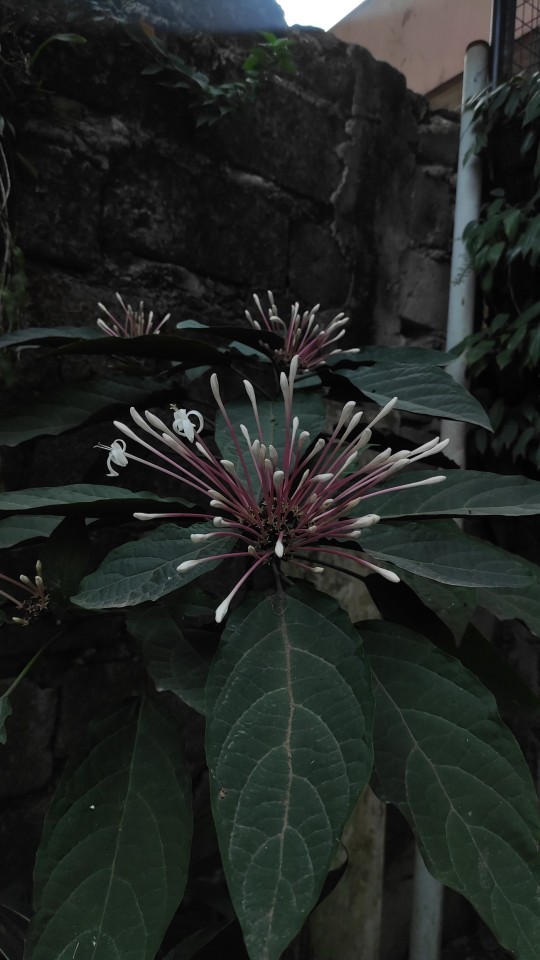
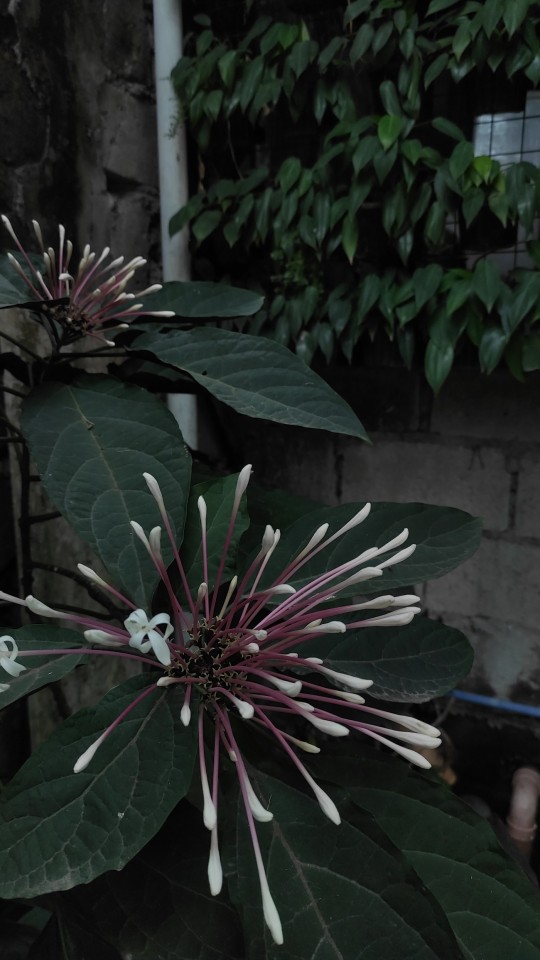
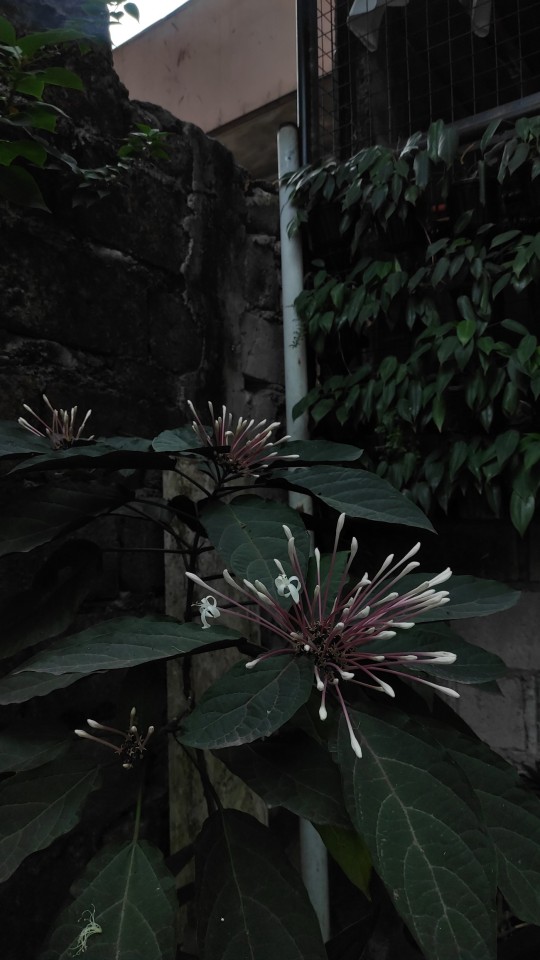
Our little Bagawak Morado plant is starting to bloom! ✨ Mas maganda yung sa neighbor namin kasi mayabong na, pero we're so happy! This one's native in the Philippines and blooms in January, siguro kaya tawag din sa kanya ay fireworks.
17 notes
·
View notes
Text

10 years ago I took photos of trees newly planted on the campus of UP Diliman. I went back to take pictures of them again to see how big they've grown. What makes these trees special is that they are native to Philippine forests, many represent species long forgotten, or even near extinction. 2013 was also my first year designing for non-profits, specifically in the environmental movement. Today I still make art about the environment through my @philippinewildlifeart project. Sometimes I like to think that these trees are physical representations of how far I've grown, and how far I've yet to go. See 20 of the trees side-by-side with their "baby pictures", with a bit of "tree-via" on each species: https://filipeanut.art/a-10-year-old-forest-of-native-trees-in-metro-manila-before-and-after/
5 notes
·
View notes
Text
Hey. It's @reaux07. If you remember my last angry history rant on Paul Robeson, I'm back for Part 2. This time? King Leopold II and his relationship to the Congo. I just finished writing a 5-page, single-spaced essay on this for class, so I'll do my best to summarize in bullet points this time rather than chunky paragraphs. This will still be long though, as a warning, but it's a necessary read. Please let me get through this, because y'all know this hurts to write.
Trigger warnings for... just about everything typically associated with mass colonization (e.g. rape, murder, torture, etc.). Tiktok below as a brief introduction first:
King Leopold II of Belgium, due to his personal unpopularity and lack of love from his parents, had low self-esteem. As his father had already made 50 attempts to colonize foreign lands to no avail, Leopold felt the only way to uplift both himself and his country was to take take control of his own colony.
He checked Sarawak, the New Hebrides, the Fiji Islands, and the Philippines. Nothing. But what was left? The Congo.
How did he learn of the Congo? Leopold hired Henry Morton Stanley, a famous Welsh explorer of the time, to cross Africa from east to west, walking and canoeing 7,000 miles.
Upon the Congo's discovery, Leopold turned his palace into a luxury hotel for the delegates of a new conference to discuss Africa's colonization, supervising every detail. He successfully lied to the major powers of Europe, making claims of charitable and philanthropic aims, and that there would be free trade amongst the African colonies. (And yes, he did give every single attendee a painting of his face... Because he could.)
Meanwhile, back in the Congo, Stanley (the explorer I just mentioned) used bribes and trickery to provide official treaties with the various chiefs of the land in case Leopold ever needed legal proof of land ownership. (Ex of said trickery: One report noted that a village assumed "the white man controlled the sun.")
In 1891 and 1892, Leopold released decrees stating that both vacant land and produce of the forests exclusively belonged to Belgium and that natives could only harvest for the state.
Enforcing Leopold’s rule were 16,000 Africans equipped with modern Belgian-made automatic rifles.
Outing Attempt #1: One African American man, George Washington Williams, during his trip compiled a report to be sent to the American secretary of state. In this letter, Williams remembers bets being taken on who could shoot the native people in the head first, among other instances of vile treatment. While the document never made it back to Williams’ home country, it was eventually found in Europe where he later died.
By this point, the Congo was actually ruining Leopold’s finances and he was growing desperate. But to his surprise, he happened to pick the one spot where rubber grew in abundance, just as the demand for cars and bicycles rose internationally, John Dunlop, a Scottish veteran, having just invented the first pneumatic tire.
Because of this, rubber-prominent areas were the targets of mass exploitation and punishment if daily and weekly rubber quotas were not met.
Missionaries began to write not just to one another, but back home in disgust of these aforementioned “punishments,” one man’s writings put in missionary magazines and national newspapers in Europe. These punishments included rape, tying people up to trees, cutting off men's heads and genitals to be displayed along the fences of Congolese villages, cutting women’s breasts off, and most notably...
Attempt #2: The world, if only momentarily, saw BASKETS after BASKETS of right hands that had been cut off as proof that each of the cartridges given to the Africans had been fired and killed one of their own people. These hands were then smoked for preservation and brought back to their officers.
What did Leopold do once this information came out alongside photos of child mutilation? Acknowledge the abuses and moved on almost immediately.
In Europe, the rubber was processed in a city called Antwerp, ironically named after a mythological giant who also cut off hands. To this day, the connection between such a name and Belgian history has not been made by the general public as countless documents by the Belgian Ministry of Foreign Affairs are kept secret to maintain an image of untouched royalty.
One commissioner in charge of a district in Congo, Leon Fievez, produced one ton of rubber a day, boasting of 1,000 people killed, 162 villages destroyed, burning gardens and plantations so people would starve, and having “only” used 3,000 cartridges. He was nicknamed the “Devil of the Equator” and rightly so.
Attempt #3: One day, a man named Charles Stokes, a British trader working for the Germans, entered the picture. Stokes was arrested for trading in state territory, despite those former claims of free trade, and sentenced to death. Leopold was forced to pay compensation to both Britain and Germany for his death, both countries now increasingly aware of the Congo’s dark reality.
To cover it up, Leopold made claims of the Congo opening up to new companies. Let's be real: His men were on the boards of all these new companies and he took 50% of the profits.
In particular were these "concession companies" where the "hostage system" was set up. Agencies, with official hostage licenses authorizing such, would take the wives of rubber collectors for up to 15 days until the quota was met.
On the 15th day, the men of the Congo either got their wives back or faced further punishment, often death. For the agents, the 15th day meant it was time to calculate commissions, and for the king? It was proof that this new hostage system worked.
These abusive concession companies lasted over 10 years until formal competition arose in South America and Asia.
Attempt #4: Then came Edmund Dene Morel, a half-French, self-taught shipping clerk turned investigative journalist who wrote in The Speaker of the abuses faced by the Congolese, backed up by evidence, not just speculations.
Due to Morel’s growing specialization in West African affairs, he was able to not only send out 15,000 brochures and 3,700 letters in six months after his move to Wales, but start his own newspaper, West African Mail.
By 1903, Roger Casement, an ally to Morel’s cause, spent two months traveling the upper Congo, recording African testimonies. He, too, realized that missionaries were key witnesses and went to visit Joseph Clark (a missionary of 20 years) for 17 days.
Through these reports, which grew to 50 pages in length, Casement and Morel were able to solidify Belgium as perpetuating the worst colonial system Africa had ever known. Punishments included Africans performing public incest for the colonists' entertainment, decapitation, women being stabbed with wooden spikes up their vaginas, and one woman tied up to a tree and slashed straight in half from her left shoulder through her abdomen and out the other side.
The West African Mail even reported on a part of Congo no one knew existed, private property within private property called the “Crown Domain” on the other side of Lake Tumba, which gained 231 million euros alone, all sent directly to King Leopold II. Crown Domain was 10x 5)3 size of Belgium.
Founded by Morel, Liverpool became the headquarters of a coalition called the Congo Reform Association. He also published a book called Red Rubber (1906). I think you’ll find the cover particularly striking! Check out the hand in the bottom right corner being weighed against King Leopold II on the left.
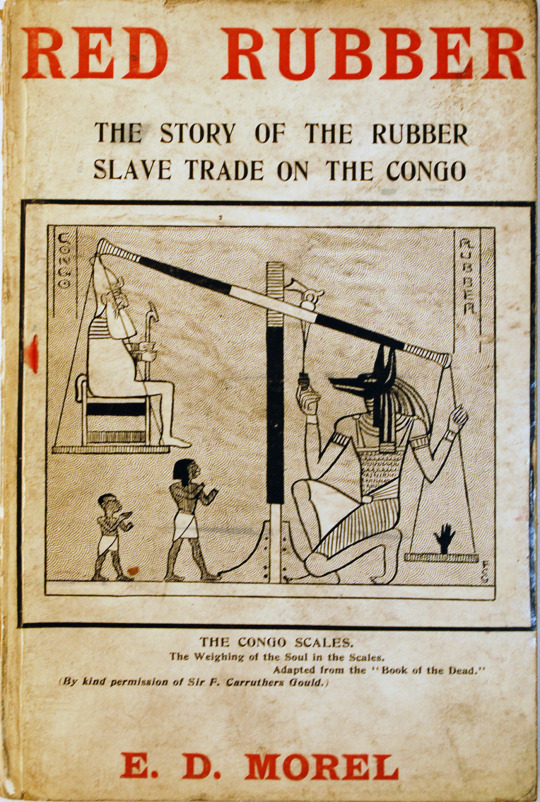
Leopold obviously not having this, commissioned a number of books and monthly magazines to clear up the mess. This didn't work. Obviously.
He even tried to send his own international commission to control what the Congolese said in 1904, to no avail. This was due to a missionary named John Harris who had taken the accounts of various people in the area and sent them back to Morel.
In one particularly heartbreaking moment, a chief brought to Leopold’s judges 110 twigs for each of the entire villages, not just people, killed by the Belgian state, naming every last one.
By the time they returned to Europe, the governor-general committed suicide and, upon being asked, Harris suggested Leopold should be sent to the gallows by the relatively new International Court of Justice.
The commission's report vindicated Casement and Morel. Leopold had tricked no one. EVERYONE in Belgium was calling him out.
Leopold ordered all of the Congo State Records to be burned.
In 1908, the Congo became a Belgian colony, not longer Leopold’s personal property. The state still made claims of "civilizing" the Africans after Leopold's death though, utilizing the leftover mineral exploitation industry with no guilt.
At least during his funeral, which he was denied of having privately, the entire city booed his body <3 well deserved. By this point, he had become Europe’s most hated man of the time.
And in case you were wondering, Casement and Morel were both accused to pro-German sympathies during WWI and executed.
I would like to add more detail but I think I’ve hit a character limit. Just know that Congo’s population was cut in HALF, in some places as much as 60-90%. Villages after villages were burned, as shown through so many soldiers’ and missionaries’ journals. This was a genocide of over 10 MILLION PEOPLE y’all. Hearing this story was truly SICKENING, but here’s the BBC 4 documentary we watched for class for more: Congo: White King, Red Rubber, and Black Death.
What truly gets me is just how OTHER colonizers were calling this man out after finding out the full truth… For me, that feels like extra proof of how truly messed up this was if THEY were disturbed too.
And what feels truly insidious was how Leopold made sure to institutionalize all of his wrongdoings and was so… obviously knowing about every wrongdoing, I mean writing in letters to make sure no one else found out. Please…
Linking my angry history rant on Paul Robeson from last semester here.
Happy Black History Month.
#belgium#king leopold ii#democratic republic of congo#history#black history month#colonialism#tw genocide#tw rape#tw torture#tw massacre#the congo#tw incest#resources#bipoc#undescribed#reaux speaks#black lives matter
201 notes
·
View notes
Text
pn character name post...TWO! last name edition and also the random psychonauts around the motherlobe who i didn't feel like including in the first one
including ones that aren't real surnames but are real words/clearly plays on real words. if one is missing assume either it doesn't mean anything/I couldn't find a meaning or I didn't think it needed explaining (e.g. Sweetwind, Doom)
Aquato - clearly a play on "aqua"
Nein - "no" in German
Zanotto - from a diminuitive of Zane or Zani/Zanni, the Venetian form of Gianni, which is short for Giovanni, which is the Italian form of "John" (God is gracious, Hebrew). unrelated but "Zanni" is also where we get the English word "zany"
Oleander - a flowering shrub that is grown as an ornamental or landscape plant despite being poisonous
Cruller - a kind of twisty donut :)
Boole - possibly from a Middle English word for bull
Canola - genericized trademark of a brand of cooking oil. the "can" is short for "Canada"
Zilch - German surname of uncertain etymology, slang for 'nothing'
Athens - after the Greek city, which Athena was probably named after, not the other way around
Lutefisk - Norwegian word for a traditional Nordic fish dish. it's soaked in lye.
Bulgakov - son of Bulgak (Bulgak being a surname in its own right that means "restless" or "troublesome"). Mikhail is probably named after the Russian author Mikhail Bulgakov, best known for The Master and Margarita
Fir - as in a fir tree
Phage - short for bacteriophage; a Greek suffix meaning "eater"
Bubai - Mandarin word meaning "invincible"
Tripe - animal stomach lining prepared for food; figuratively used to mean nonsense or valueless ideas/writing
Fideleo - possibly from Latin "fidelis", faithful/loyal
Cooper - barrel maker (English)
Soleil - "sun" in French
Houndstooth - a fabric pattern (that Becky does not wear)
Rolls - likely alluding to fat rolls
Bonaparte - French-ified version of Buonaparte, an Italian surname meaning "good match" or "good solution"
Teglee - derived from famed black velvet painter Edgar Leeteg; "Leeteg" was originally "Lütig", which I can't find a straight answer on what that means
Inflagrante - from "in flagrante", a shortened version of "in flagrante delicto", a Latin term that literally translates to "while the crime is blazing" and basically means "in the act"; it can refer to being in the act of doing something bad but particularly when shortened also means. well. in the act of Doing A Sex
DeLucca - alternate spelling of Italian De Luca, "[child] of Luca"; Luca ultimately meaning "from Lucania"
Pokeylope - pokey (slow) + lope (to walk slowly). good turtle name
Loboto - clearly a play on "lobotomy"
Forsythe - man of peace (Scottish Gaelic)
Natividad - Spanish for "nativity", meaning birth but particularly referring to the births of Mary or Jesus. a common name in the Philippines in addition to Spanish-speaking countries
Martinez - son of Martin (Spanish). "Martin" is derived from "Mars", Roman god of war and root of the word "martial"
Joseph - "he [God] will add" (Hebrew)
Gette - variation of Goethe, derived from "Gott" (God in Middle High German as well as modern German)
Neriman (also spelled Nariman) - a name of Persian origin, possibly meaning "brave mind"
Potts - topographical name. if you lived near holes in the ground you might have gotten called Potts
Malik - "king" in Arabic and various other Semitic languages; as a surname, is most common in India and Pakistan
OKAY now for the miscellaneous motherlobe NPCs
Brianne - "hill" or "power" (Celtic)
Chet - short for Chester, "fortress" (Latin)
Colin - young dog (Scottish)
Crenshaw - possibly "twisted wood" (Old English)
Dustin - from Thorsteinn, "Thor's stone" (Old Norse)
Evan - from the Welsh form of John
Forrest - take a guess.
Frank - Frenchman, more or less
Hawkins - diminuitive of Hawk or of Hal (from Henry, "home ruler", Germanic)
Jared - descent (Hebrew)
Kim - diminuitive of various names
Kramer - shopkeeper, merchant (German)
Lance - land (German/Old Saxon)
Larry - short for Laurence, "from Laurentum" (Latin)
Lori - short for Laura (laurel) or Lorraine (kingdom of Lothar, a Frankish king)
Sherri - from "cherie", French for darling
Susan - lily (Hebrew)
Thad - short for Thaddeus, Greek name of unclear origin
Whitlatch - "white path" or "white stream" (Old English)
14 notes
·
View notes
Text
[Fernando Nakpil Zialcita] first described elements of "pre-Christian, pre-Islamic religion" in the Philippines. He mentioned "reverence towards the spirits of the ancestors and nature spirits," which meant that "unusual rocks, strange trees like the balete, or mysterious animals like the crocodile were revered." The concern of the natives "was really fertility, health, and prosperity."
The goal of life, he said, "was to enter the afterworld with high status, to be buried with all of your possessions such as porcelain, gold, and slaves." This was because one's position in the afterlife depended on one's status in this life.
"Ecstasy," he added, "was very important in indigenous religion."
"This comes out clearly in our Catholic processions, such as Ati-Atihan or Sinulog or Obando or Turumba. There's a lot of dancing," Zialcita said in this webinar uploaded by De La Salle University.
He noted that while Spanish friars allowed them, "these dances are definitely not of Spanish Catholic origin." They are now considered "Catholic," however, "because generally the priest presides over these processions with special mention of Jesus and his mother."
"A second way in which our indigenous religion continues to influence Catholicism today, is the concern of many, not with spiritual salvation, but with physical salvation," said Zialcita. Forms of physical salvation include "safety from harm, illness, and material want."
In his analysis of the Nazareno devotion, Zialcita said that for "the millions of men who compete with each other to be able to draw near this sacred icon and touch it with a towel," the primary concern "is not really liberation from sin." Rather, it is "the desire to ensure their family's well-being."

8 notes
·
View notes
Text

Did you know that this is how cashews grow?
Cashews are the seed of the cashew tree. They don’t form alone but grow alongside a fruit. Cashew apples are the fruit of the cashew tree and are a very special type of fruit known as an ‘accessory fruit’. Accessory fruits are different from true fruits because they do not form from the ovary. Instead, they form from the floral parts of the plant. Cashew apples are particularly unique because they don’t start to form until after the cashew nut has fully developed. At this stage, the cashew apple begins to grow from the stem of the cashew drupe.
Once mature, cashew fruits look a little like misshapen apples, hence their name. They can be yellow-red when ripe and have sweet, pulpy flesh. Unfortunately, cashew apples don’t transport very well and perish within a few days of ripening. Some growers sell their cashew apples locally, while others juice their cashew apples for the beverage industry, and in Goa, the apples are fermented to make Feni, an alcoholic beverage.
Cashew trees are native to Northwestern Brazil but have been transported all over the world by explorers. Today, the Ivory Coast and India are the two top producers of cashew nuts, closely followed by Burundi, Vietnam, and the Philippines. Newly planted cashew trees take around three years to bear their first fruit, but most growers must wait eight years for a full commercial harvest. Healthy, mature cashew trees will produce fruit annually and be ready to harvest between February and May.
Layouts.ca
7 notes
·
View notes